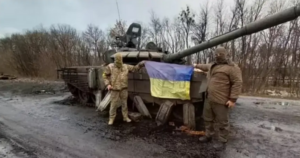One of the many surprising failures of the Russian invasion force in Ukraine has been in radio communications. There have been stories of troops resorting to commercial walkie-talkies and Ukrainians intercepting their frequencies. This may not sound as serious as a lack of modern tanks or missiles, but it helps explain why Russian forces seem poorly co-ordinated, are falling victim to ambushes and have lost so many troops, reportedly including seven generals. What is going wrong with Russian radios?
Modern military-grade radios encrypt signals and change the frequency on which they operate many times a second, making their transmissions impossible to intercept. But many Russian forces are communicating on unencrypted high-frequency (HF) channels that allow anyone with a ham radio to eavesdrop.
The Russian army does have some modern tech. It started receiving Azart radios, which have built-in encryption and can operate on much higher frequencies, in 2012. Thomas Withington, a military analyst specialising in electronic warfare, says that the Azart system seems adequate, if inferior to the equipment used by NATO forces. But there are not enough radios to go around.
Russian news reports have talked enthusiastically about deliveries of a few hundred radios shipped to whole army groups comprising several thousand troops. By the most optimistic estimates only a fraction of the invasion force could have Azart radios.
Read more: Economist
Ask me anything
Explore related questions





